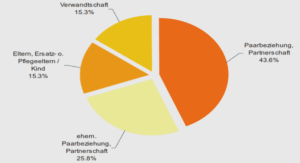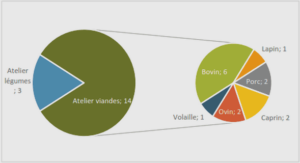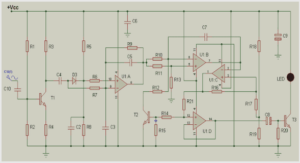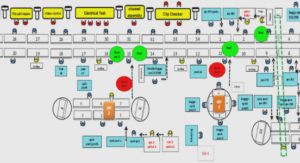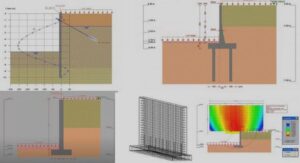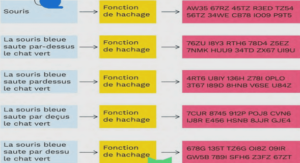Proposed low complexity image compressions
Introduction Reducing the algorithmic complexity of image compression techniques is a great challenge in wireless image sensor networks (WISNs) [65-68]. These WISNs are often under constraint of energy autonomy. Many image compression standards such as JPEG and JPEG2000 are not suitable for implementation in WISN, as reported in [69]. Such standards do not guarantee energy savings due to their high computational complexity. As we mentioned in the previous chapters, the transformation step such as discrete cosine transform (DCT) and discrete Tchebichef transform (DTT) consumes more than 60% of the computational requirements in JPEG standard for image compression [70]. Therefore, significant improvements in speed and energy with JPEG technique can be obtained; by reducing the computational complexity of the transform and that what we focused on it in this chapter. So we have proposed a low complexity image compression schemes based on the DCT and/or the DTT in order to more reduce the arithmetic complexity and gain in time and energy consumption. Since these algorithms are floating-point and they are implemented with high algorithmic complexity and memory intensive. Therefore, they consume large system resources. In particular, those requirements pose a serious limitation on multimedia applications in resourceconstrained systems, such as wireless multimedia sensor networks (WMSNs). Moreover, some researches turn out their focus to the Discrete Tchebichef Transform (DTT), as an alternative method of the DCT. Despite its good energy compaction property, low algorithmic complexity and low memory requirements, the DTT is potentially unexploited in the literature. So, they recently tried to study and evaluate the areas where the integer DTT outperforms the DCT, in order to use it in the field of image and video compression. This transformation has been already used for several applications in image processing such as artifacts measurement [71], image analysis [72] and recently in image and video coding [73-74]. In this chapter, we will propose new DCTs [75-76] to more reduce the arithmetic complexity and also to maintain a good trade-off quality/complexity, which is suitable for resource constrained low-power sensors nodes. In the other hand, we will prove that the DTT is a useful tool in image and video compression by proposing a Pruned Discrete Tchebichef Transform (P-DTT)[77] that exhibits low computational complexity and high image compression performance.
Properties of the DCT
The following section presents some properties of the DCT that are extremely important, the most used of them are:
Energy compaction
Efficiency of a transform scheme especially in applications such as image and video compression can be directly measured by its ability to pack input energy into as few coefficients as possible. This allows the quantizer to discard coefficients with relatively small amplitudes without introducing visual distortion in the reconstructed image. The Karhunen-Loève transform (KLT) presents the optimal transform that provides the perfect representation in terms of energy compaction and decorrelation of coefficients [53]. However, the KLT is data dependent, so its computational complexity is relatively high preventing its usage in typical video processing applications. The energy compaction performance of DCT approaches that of the KLT for first-order Markov signals such as images, which makes the DCT very useful tool in image processing especially in image compression.
Separability
The 2-D DCT transform given by equation (2.1) can be separated in row-column transformation. However, the column transformation is represented as follows: 1 0 2 (2 1) , cos 2 ( , ) N j N j y u j C Y u (3.1) Where is the row transformation. This transformation is represented as follows: 1 0 2 2 1 , cos 2 ( , ) N i N i u x i j C u y u j (3.2) Hence, the 2-D transform is separable and therefore equations (3.1) and (3.2) can be computed by two successive 1-D transforms applied row-wise and column-wise on the 2-D input data array. This operation can be described in matrix notation as [78]: Chapter 3: Proposed low complexity image compressions 37 (3.3) Where C is the M × N transformation matrix.
Orthogonality
The DCT transformation matrix C is invertible and its inverse denoted as follows the relationship . Therefore the inverse transform exists and is computed as, (3.4)
Assessment criteria
In this thesis, we perform our evaluations concerning the image quality in terms of MSE, PSNR and SSIM. And we evaluate the complexity in terms of number of operations, execution time and energy consumption.
Image quality
To evaluate the performance of the proposed transforms in image compression, we used it as part of JPEG chain. This chain includes standard quantization table and Huffman encoder that are given in the JPEG standard [79]. For this purpose, we considered a variety of 512×512 8-bit standard grayscale images taken from [80]. This set contains low-frequency, medium frequency and high frequency images. In fact, the image type has an effect on compression performance and energy compaction property ensured by the DCT. Thus, the result obtained by the same compression algorithm varies depending on the image used. So, we use a variety of images to guarantee that our results are robust. Some typical test images are shown in Figure. 3.1.

